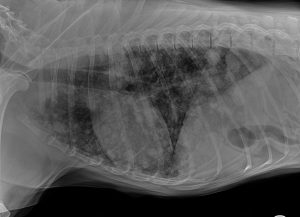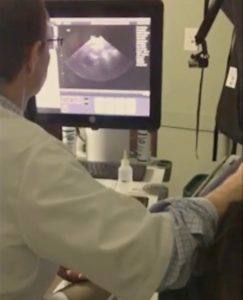Did you know that annually there are 6 million new cases of cancer diagnosed in dogs, and a similar number in cats in the US alone? Did you also know that the 2018 Nobel Peace prize was awarded to two immunologists ( James Allison and Tasuku Honjo) for 6 new targeted cancer treatments using targeted immunotherapy. This work was started on mice but is now expanding to humans and pets alike. There are also countless universities working on ways to combat cancers such as Gliomas, hemangiosarcomas, and osteosarcomas. All of their research is benefiting multiple species and finding success in animals as well as people.
What causes pet cancer?
For most of us pet parents, we are thankful our fur babies are living longer lives with a combination of loving homes, good nutrition, regular exercise, and continued veterinary care. Unfortunately, we have yet to be able to stop cancer. There are many reasons our pets get cancer, including genetic links, viruses (feline leukemia virus), or environmental carcinogens (possible link to oral squamous cell in cats from cigarette smoke), or a combination of these.
How can I be proactive about finding cancer before it’s too late?
Regardless of the cause I find it helpful to talk to clients about early warning signs that something may be wrong with their fur baby. This list was compiled by the Veterinary Cancer Society. All of these proactive tips can help uncover disease in cats or dogs. Keep in mind, not all of these findings guarantee a diagnosis of cancer, but could help identify any number of other treatable health issues in your pet.
- Abnormal swelling that persists or continue to grow – think a bump or lump that keeps growing under the skin. Don’t just watch it, diagnose it
- Sores that do not heal – Think skin sores or infections that do not heal despite appropriate antibiotic and wound therapy. (skin around nail beds can also harbor cancer)
- Weight loss – this means unexplained or unintentional weight loss. This is a common sign of intestinal cancers.
- Loss of Appetite – when pets don’t feel well, they often stop eating
- Bleeding or discharge from any body opening – nose bleeds or bleeding from the rectum or bladder can necessitate further diagnostics as there are numerous cancers found along those areas
- Offensive odor – odor can be caused by draining tracts from the centers of cancers. Pus-filled tracts arise when the cancerous masses are growing faster than their blood supply can support
- Difficulty eating or swallowing – a mass in the mouth or neck can make this act difficult or painful
- Hesitation to exercise or loss of stamina – if there is a heart-centered tumor or one occupying the lung cavity, it is difficult to do things that cause increased energy needs
- Persistent lameness or stiffness – certainly there are lots of other causes of lameness, but bone cancers can cause pain and swelling in the affected leg, and are usually not responsive to typical pain control efforts
- Difficulty breathing or eliminating stool or urine – lung cancers, bladder cancers, or intestinal cancers can change the way our pets breathe or eliminate

The top forms of cancers seen in dogs:
Mast cell tumor: This is a very common form of cancer of the connective tissue. Most commonly seen on the skin, but can also be found in the respiratory tract, the intestines, or other organs. The mast cell itself is part of their normal immune system and is responsible for the release of histamines triggered by allergies. When there is a mutation of this normal process, a tumor can arise. Boxers are more susceptible to this type of cancer.
Melanoma: This cancer is often pigmented, and the most severe forms of this are found in the mouth and on the toes. Melanin pigment is responsible for skin color and is produced by melanocytes, which are the cells that give rise to this type of tumor. Areas of dark pigment are most commonly affected, though any tissue is at risk.
Lymphoma: Lymphoma is a cancer of the lymphatic tissue, which is comprised of lymphocytes and lymph nodes/tissue. Lymphocytes are a normal type of white blood cell. Lymphoid tissue is found in all lymph nodes, which are spread throughout the body and in various organs like the spleen and intestinal tract. Enlarged and firm lymph nodes are common signs seen with this cancer.
Osteosarcoma: This is a cancer of the bone and is most often seen in larger breeds of dogs. The most common areas are the shoulders, wrists, and knees. This is a very painful cancer, therefore, limping or lameness is a predominant clinical sign of osteosarcoma.
Hemangiosarcoma: This is a cancer of the cells lining the blood vessels, called endothelial cells. This is seen more commonly in older large breed dogs like Golden Retrievers, Labrador Retrievers, and German Shepherds. This cancer is slowly progressive and signs are often undetected without early screening in predisposed breeds. It most frequently forms primary tumors in the spleen or heart, but can be found in any organ as either a primary tumor or as spread from another location.

The top five cancers affecting cats are:
Lymphoma: Like dogs, this cancer is derived from the white blood cell type called a lymphocyte. This lymphoid tissue is found all over the body including the lymph nodes, spleen, intestinal tract, and kidneys, to name a few. Cats seem to get the intestinal form of lymphoma most commonly.
Feline Leukemia Virus: This virus was one of the leading causes of lymphoma in cats until the vaccine emerged, drastically reducing FeLV-induced lymphoma. Cats that have this virus have a very high incidence of developing lymphoma.
Mammary adenocarcinoma: Breast cancer of the female cat is commonly seen in the older or non-spayed population. Spaying cats before their first heat cycle drops this risk exponentially.
Squamous cell carcinoma: This tumor is a form of skin cancer that mostly affects the areas of low hair growth. These areas include the nose, eyelids, and ears. Areas of light pigment are most commonly affected. Sun exposure to these areas can increase the risk of developing this skin cancer. Occasionally this cancer can occur in the mouth of cats, and is potentially linked to exposure to cigarette smoke.
Fibrosarcoma: This is an aggressive cancer of the connective tissue. It most often occurs just under the skin or in the oral cavity and is firm and grows rapidly. Surgical removal can help, but not always cure, this form of cancer.
What if my pet gets cancer?
Ways to manage cancer are numerous, and thankfully, very helpful. The best chance to defeat cancer is early in the disease process. Coming in as soon as you notice one of the warning signs I mentioned is a great place to start. We can use bloodwork, urinalyses and radiographs to rule out some of the other reasons for those same clinical signs. Ultrasound is also very useful in checking internal organ systems for any abnormalities. Thankfully we can perform all the initial work up right in clinic! Some of these common forms are completely curable with complete surgical excision and good follow up care. This is great news. Other ways to fight cancer are through the use of radiation treatments or chemotherapy. Surgical and Oncological specialists are available locally at either of our vet clinic referral institutions, Veterinary Specialty Care or Charleston Veterinary Referral Center (CVRC). As I mentioned in my opening paragraph, there are promising new ways of using immunotherapy for cancer as well, such as using the patient’s own blood as immunotherapy against the cancer without any other form of treatment! How exciting?! Not all cancers are metastatic, or capable of spreading to different sites. Many masses are benign, and can be successfully removed or cured.
Still have questions? Feel free to give us a call, and we will be happy to help!








